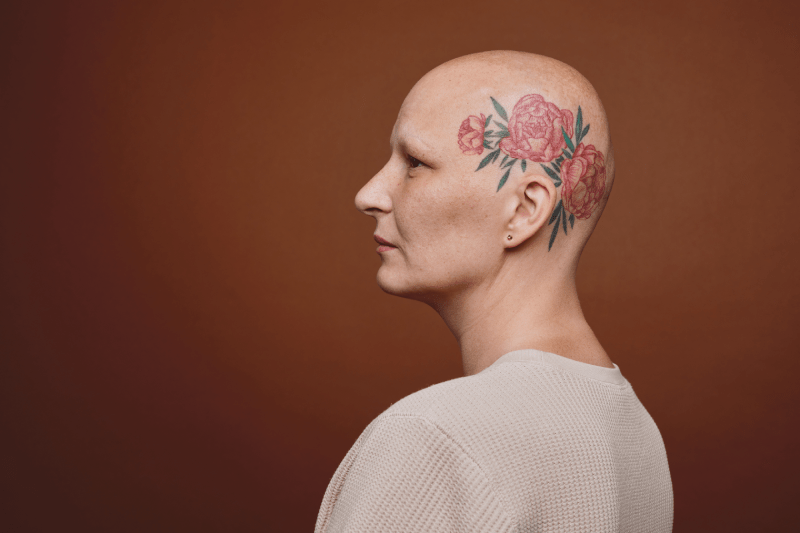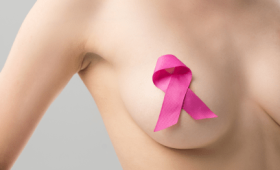What Is Breast Cancer And What Are Its Main Types?
Breast cancer is a disease characterized by the uncontrolled growth of cells in the breast tissue, forming a mass (tumor). The most common types are Invasive Ductal Carcinoma (IDC), originating from the milk ducts, and Invasive Lobular Carcinoma (ILC), originating from the milk glands (lobules).
Furthermore, classifications are made based on the extent of cancer cell spread; for example, Ductal Carcinoma In Situ (DCIS) remains confined only to the ducts. The biological subtype of the cancer (Hormone receptor status, HER2 status) plays a critical role in determining the treatment strategy. You can benefit from Cure Holiday consulting services to plan the necessary steps for accurate diagnosis and subtype identification.
What Are The Early Symptoms Of Breast Cancer?
The most common early-stage symptom of breast cancer is a painless lump felt in the breast or armpit. However, noticeable changes in the size, shape, or appearance of the breast tissue are also warning signs. Bloody or clear discharge from the nipple, inward pulling of the nipple (retraction), or inflammatory changes such as an orange peel appearance or redness on the breast skin should also be considered. Since early detection significantly increases treatment success, it is necessary to consult a specialist immediately if such changes are noticed. Cure Holiday can assist you in coordinating fast and accurate diagnostic processes.
How Is Breast Cancer Diagnosed And What Tests Are Performed?
Breast cancer diagnosis is usually established through a three-stage approach: clinical examination, imaging methods, and biopsy. Imaging methods include Mammography, Breast Ultrasound, and Breast Magnetic Resonance Imaging (MRI) in some cases. For a definitive diagnosis, taking a tissue sample (biopsy) from the suspicious mass is mandatory.
The biopsy material is examined by a pathologist to determine the presence, type, and biological characteristics (hormone receptor and HER2 status) of the cancer cells. The results of these detailed tests form the basis of the treatment plan. You can contact Cure Holiday for comprehensive information and appointment coordination related to your diagnostic processes.
Why Is Early Diagnosis Vitally Important In Breast Cancer?
Early diagnosis is vitally important in breast cancer because it maximizes the chances of cure and long-term survival rates. When cancer is detected before it spreads outside the breast tissue, especially to the lymph nodes or distant organs, the chance of complete recovery with surgery and complementary therapies is very high. Cancers caught in the early stage can usually be managed with less extensive surgery and milder additional treatments, which preserves the patient’s quality of life. For this reason, regular annual mammography screenings for women aged 40 and over are strongly recommended. Contact Cure Holiday for access and planning for early detection programs.
What Are The Risk Factors For Breast Cancer?
The most important risk factors for breast cancer include increasing age and family history (especially having a first-degree relative with breast or ovarian cancer). Other risk factors include reproductive history-related conditions such as starting menstruation early, entering menopause late, never giving birth, or giving birth for the first time at an older age (after 30). Furthermore, long-term hormone replacement therapy, excessive alcohol consumption, and obesity also increase the risk. It is important to understand these risk factors and undergo genetic testing when necessary. Cure Holiday can assist you with risk assessment and consulting services.
In Which Cases Should Genetic Testing Be Performed?
Genetic tests are performed primarily to detect inherited mutations, such as BRCA1 and BRCA2, which significantly increase the risk of breast cancer. They are generally recommended for individuals diagnosed with breast cancer at a young age (under 50), those with multiple cases of breast, ovarian, pancreatic, or prostate cancer in the family, and those with cancer in both breasts. Detecting these mutations provides critical information for managing the patient’s future risks (such as preventive surgery) and personalizing the treatment plan (such as targeted therapies). Cure Holiday will guide you through genetic counseling and testing processes.
What Are The Treatment Options For Breast Cancer?
Breast cancer treatment involves a combination of several methods depending on the tumor’s biological subtype, stage, and the patient’s overall health status. The main treatment options are surgery (breast preservation or mastectomy), Radiation Therapy, Chemotherapy, Hormone Therapy, and Targeted Therapy. Most patients receive several of these methods sequentially. For example, chemotherapy (neoadjuvant) may be given before surgery, or treatment may continue with radiation and hormone therapy after surgery. Your treatment team will provide you with the most suitable and personalized treatment plan. Consulting with Cure Holiday experts is recommended to formulate your personalized treatment plan.
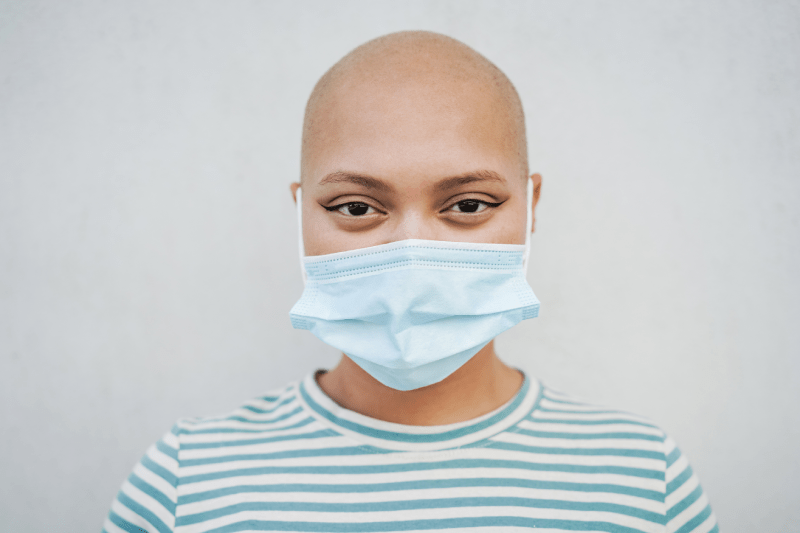
Is It Possible To Preserve The Breast In Surgical Treatment?
Breast-Conserving Surgery (Lumpectomy/Partial Mastectomy), where the cancerous tissue and a margin of surrounding healthy tissue are removed, can often be performed in the surgical treatment of breast cancer. This method is preferred when the tumor is small and appropriate relative to the size of the breast. All patients undergoing breast-conserving surgery usually require Radiation Therapy as well, to reduce the risk of recurrence. The decision-making process for the surgical method is carried out considering the tumor size, location, and the patient’s personal preferences. You can get information about surgical options and aesthetic outcomes from Cure Holiday.
In Which Cases Is Mastectomy Necessary?
Mastectomy, the surgical removal of the entire breast, is usually necessary when the tumor is large, when the surgical margins cannot be cleared after breast-conserving surgery, or when there are multiple foci of cancer in the breast. Furthermore, mastectomy may be performed for risk reduction purposes in patients with high-risk genetic test results (such as a BRCA mutation). Today, patients undergoing mastectomy are frequently offered the option of simultaneous or delayed Breast Reconstruction (Reconstruction). You can benefit from the expert consulting service of Cure Holiday to evaluate your surgical decisions most accurately.
Why Is Sentinel Lymph Node Biopsy Important?
Sentinel Lymph Node Biopsy is performed to identify the first lymph node (sentinel lymph node) to which cancer cells spread from the breast to the armpit. Removing and examining this node shows whether the cancer has spread and reduces the need for unnecessarily removing all armpit lymph nodes (axillary dissection). If no cancer cells are found in the sentinel lymph nodes, it helps preserve the patient’s arm and shoulder function and reduces the risk of lymphedema. This seemingly simple yet very important procedure is part of your surgical decisions. You can get detailed information about this procedure, which is part of your surgical decisions, from Cure Holiday.
At Which Stage Is Chemotherapy Used In Breast Cancer?
Chemotherapy can be used at different stages in breast cancer. It may be given before surgery (neoadjuvant) to shrink the tumor and facilitate surgery, and also to observe the tumor’s response to treatment. It is given after surgery (adjuvant) to destroy microscopic cancer cells that may have remained in the body and reduce the risk of recurrence. It is also used in cases where the cancer has spread to distant organs (metastatic) to control the progression of the disease and alleviate symptoms. The decision for chemotherapy is based on the tumor’s aggressiveness and hormone receptor status. Consult Cure Holiday for information about chemotherapy protocols.
What Is The Purpose Of Radiation Therapy In Breast Cancer?
Radiation Therapy aims to kill cancer cells in the breast and surrounding area using high-energy beams. It is most commonly used after breast-conserving surgery (lumpectomy) to significantly reduce the risk of the cancer recurring (relapse) in the breast. It can also be applied to the chest wall and armpit lymph nodes after mastectomy in advanced-stage or large tumors. Radiation usually begins a few weeks after the operation and supports the patient’s recovery process. The duration and dose of the treatment are determined according to the stage of the cancer. Cure Holiday will guide you with detailed information about the radiation treatment process and side effects.
To Which Patients Is Hormone Therapy Applied?
Hormone Therapy is applied only to breast cancer patients whose cancer cells have estrogen and/or progesterone receptors (Hormone Receptor Positive, HR+) on their surface. This treatment aims to prevent hormones from feeding the cancer cells. The medications work either by blocking hormone receptors or by stopping estrogen production in the body (e.g., Tamoxifen or Aromatase Inhibitors). It is generally used for 5 to 10 years after surgery and other treatments to reduce the risk of recurrence. The duration and type of treatment vary according to the patient’s condition. You can consult Cure Holiday experts about hormone therapy options and side effects.
How Does Targeted Therapy (Smart Drugs) Work?
Targeted Therapy uses medications that target specific proteins or genetic pathways that enable cancer cells to grow, divide, and spread. The best-known target in breast cancer is the HER2 protein (HER2 Positive cancers), which is found in excessive amounts on the surface of cancer cells. These drugs block the HER2 signaling pathway, stopping the growth of cancer cells and helping the immune system recognize them. Unlike traditional chemotherapy, smart drugs cause less damage to normal cells, which makes the treatment process more tolerable. You can get information from Cure Holiday for the planning of your targeted therapy.
How Is HER2 Positive Breast Cancer Treated?
Although HER2 Positive breast cancer is an aggressive subtype, it has achieved high success rates with the use of targeted drugs (e.g., Trastuzumab, Pertuzumab). This treatment is usually applied simultaneously with chemotherapy, either before or after surgery. The combination of chemotherapy and HER2-targeted therapy ensures that cancer cells are destroyed both chemically and biologically. Different next-generation HER2-targeted drugs may also be used in metastatic (spread) disease. The duration of this treatment is generally one year. Cure Holiday will offer you comprehensive consultation about these innovative treatment protocols.
What Is Triple Negative Breast Cancer And How Is It Treated?
Triple Negative Breast Cancer (TNBC) is a subtype that has neither estrogen nor progesterone receptors nor the HER2 protein, meaning it lacks these three important targets. This implies that hormone or HER2-targeted therapies cannot be applied. TNBC is an aggressive type, and its treatment primarily relies on Chemotherapy. However, in recent years, new targeted drugs such as Immunotherapy (immune checkpoint inhibitors) and PARP inhibitors (especially in those with BRCA mutations) have been added to the treatment options. You can contact Cure Holiday to learn about and evaluate the most current protocols for TNBC treatment.
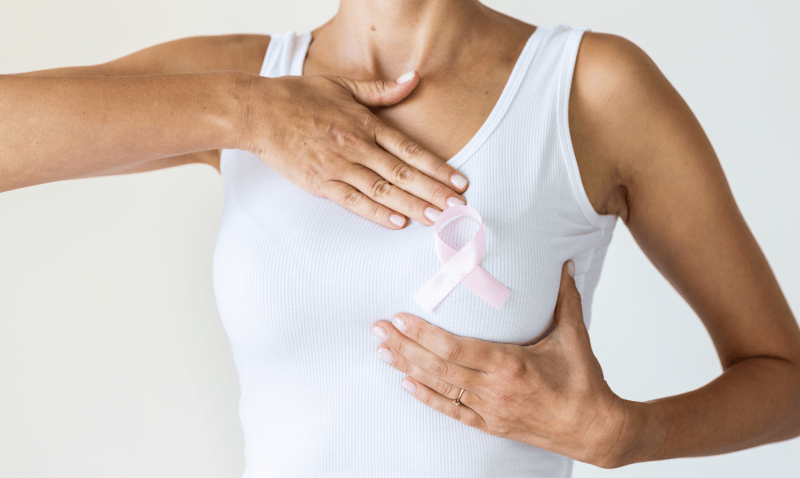
How Long Does The Treatment Process Take And What Are Its Stages?
The breast cancer treatment process varies according to the cancer’s stage and biological subtype, but it can generally last from 6 months up to 1 year. The stages are typically as follows: Diagnosis and Staging, Neoadjuvant Therapy (chemotherapy/targeted therapy if needed), Surgical Operation, Adjuvant Therapy (radiation, remaining chemotherapy), and finally Long-Term Maintenance Therapy (Hormone therapy, immunotherapy). The treatment plan is determined by a multidisciplinary board and can change dynamically according to the patient’s response. Cure Holiday will support you in planning your treatment roadmap and following the stages.
What Are The Side Effects That Can Be Encountered During Treatment?
Side effects encountered during breast cancer treatment vary according to the method applied. Chemotherapy can cause hair loss, nausea, fatigue, and increased risk of infection. Radiation therapy can cause skin redness and fatigue. Hormone therapy can lead to hot flashes, joint pain, and emotional fluctuations. Targeted therapies generally have milder side effects. Most of these side effects are manageable, and supportive care plans are implemented to enhance the comfort of your treatment. Consult Cure Holiday for detailed information about side effect management.
How Does Treatment Success Change According To Stage?
Treatment success (survival rates) in breast cancer is directly related to the stage at which the cancer is detected. In Stage 0 and I, where the cancer is limited only to the breast, success rates are quite high. When the disease has spread to the armpit lymph nodes (Stage II and III), success rates decrease but are still quite good, and cure (complete remission) is possible. Stage IV (metastatic), where the cancer has spread to distant organs, is considered a chronic disease, and treatment aims to prolong life and improve the quality of life. You can consult Cure Holiday to learn about the success expectations specific to your stage.
How Is Breast Reconstruction (Reconstruction) Performed?
Breast Reconstruction is the process of reshaping the breast after mastectomy and helps the patient regain their body integrity and self-confidence. It is performed using two main methods: Implant Use (silicone or saline-based prostheses) or Autologous Flap Method (using tissue taken from another part of the patient’s body, such as the abdominal area). Reconstruction can be done simultaneously with the mastectomy (immediate) or later (delayed). You can consult expert surgeons through Cure Holiday to determine which reconstruction method is most suitable for you.
What Does The Regular Follow-Up Program Include After Treatment?
A regular follow-up program after breast cancer treatment is vital for detecting the risk of cancer recurrence early and managing the long-term side effects of the treatment. Follow-up typically includes physical examinations, mammography (after breast-conserving surgery) or annual breast MRI (for high-risk patients), and blood tests, performed more frequently in the initial years. Bone density monitoring is also performed in patients receiving hormone therapy. Not neglecting these follow-ups supports long-term survival. Cure Holiday will offer you support for planning and managing your follow-up protocols.
What Are The Long-Term Side Effects Of Hormone Therapy?
The long-term side effects of Hormone Therapy vary depending on the type of medication used (Tamoxifen or Aromatase Inhibitor). Tamoxifen may slightly increase the risk of uterine cancer and the risk of blood clotting but can also protect bone density. Aromatase Inhibitors, on the other hand, can cause a decrease in bone density (osteoporosis) and significant joint pain. Both medications can lead to menopausal-like symptoms such as hot flashes and mood swings. You can receive support from Cure Holiday experts regarding the management of these side effects.
Is Breast Cancer Treatment Different In Men?
Breast cancer treatment in men is largely similar to treatment in women in principle, but because the most common type in men is Hormone Receptor Positive, hormone therapy (usually Tamoxifen) is frequently applied. Since men have less breast tissue, surgical removal of the entire breast (mastectomy) is mostly preferred. Chemotherapy, radiation, and targeted therapies are also used standardly according to the cancer’s stage and biological subtype. Cure Holiday offers special consulting services for treatment planning related to this rare condition.
Can Sports And Exercise Be Done During The Treatment Process?
Engaging in sports and exercise during the treatment process is generally recommended and accelerates the patient’s recovery, reduces fatigue, and improves mood. Especially after surgery, physiotherapy and exercises aimed at increasing arm movements and flexibility are important in reducing the risk of lymphedema. Intense exercises should be avoided, but light and regular walks should be encouraged. It is mandatory to get approval from your treatment team before starting your exercise program. You can consult Cure Holiday experts about exercise plans suitable for your treatment.
How Should Nutrition Be Before And After Chemotherapy?
Nutrition before and after chemotherapy is critical for increasing the body’s resilience to treatment and reducing side effects. A high-protein diet helps the body repair itself and prevents muscle loss. During periods of nausea and loss of appetite, small, frequent, and easily digestible meals should be consumed. Drinking plenty of water prevents dehydration. Additionally, fresh, well-washed foods and appropriate vitamin supplements are important to support the immune system. You can receive support from Cure Holiday dietitians for personalized nutrition guidance.
Does Breast Cancer Treatment Affect Fertility?
Breast cancer treatment, especially the use of Chemotherapy, can negatively affect fertility and cause temporary or permanent menopause. Fertility preservation options (egg or embryo freezing) should be evaluated for young patients before starting treatment. Hormone therapy also prevents pregnancy during the treatment period, but fertility can usually return after the treatment is completed. Cure Holiday will provide you with comprehensive information about fertility preservation options and planning before treatment regarding this sensitive issue.
What Options Are Applied If Treatment Fails?
If breast cancer treatment fails (the disease recurs or progresses), the treatment strategy is immediately changed. In this case, a different Chemotherapy protocol, new generation Targeted Therapies, or Immunotherapy options are generally evaluated. Treatment in metastatic disease focuses more on keeping the disease under control and improving the quality of life. Additionally, palliative methods such as radiation therapy are used to alleviate symptoms like pain or fractures. You can consult Cure Holiday for the most current treatment approaches in case of recurrence or progression.
According To Which Factors Does The Cost Of Treatment Change?
The cost of breast cancer treatment varies significantly depending on the complexity and duration of the treatment applied and the type of medications used. New-generation Immunotherapy and Targeted Therapy drugs (especially HER2-targeted biological agents) generally constitute the largest part of the cost. Surgery and radiation therapy are also important cost factors. The health system in the country where the treatment is received and the hospital’s international pricing policy also affect the cost. Cure Holiday will assist you with cost analysis and transparent pricing of your treatment options.
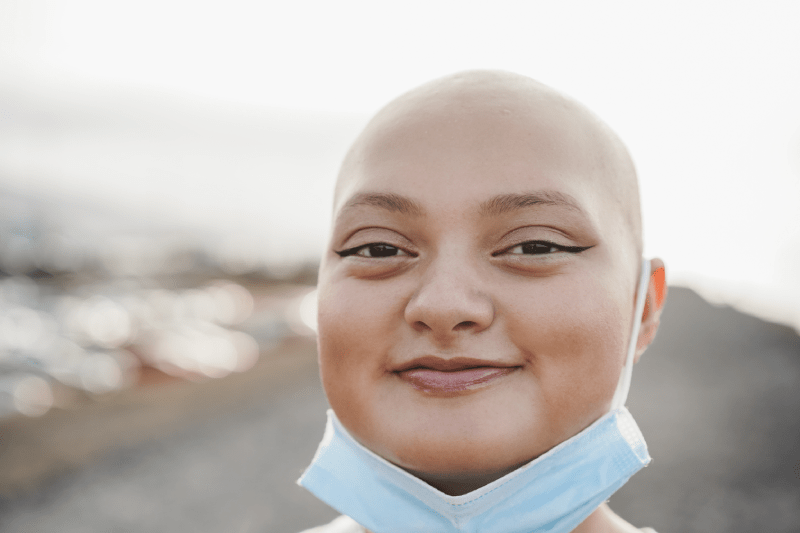
Can Work Life Be Continued During Breast Cancer Treatment?
The decision to continue work life during breast cancer treatment depends on the intensity of the treatment applied, the patient’s response to side effects, and the nature of their job. While a short break is necessary after surgery, work can usually be continued during radiation therapy. During Chemotherapy cycles, flexible working hours or temporary leave may be necessary due to fatigue and reduced immunity. This decision must be personalized, and good communication with the workplace is important. Cure Holiday will support you regarding the balance between treatment and work life.
What Role Does Immunotherapy Play In Breast Cancer?
Immunotherapy has begun to play a significant role in the treatment of aggressive subtypes, especially Triple Negative Breast Cancer (TNBC). This treatment blocks the “checkpoint” mechanism that allows cancer cells to hide from the immune system, enabling the patient’s own immune system to recognize and destroy cancer cells. When used in combination with chemotherapy in TNBC treatment, it increases the chance of success in shrinking the tumor and reducing the risk of recurrence. You can consult Cure Holiday experts for the evaluation of your suitability for immunotherapy.
Why Is Radiation Necessary After Breast-Conserving Surgery?
Radiation therapy after breast-conserving surgery (lumpectomy) is almost always necessary to destroy microscopic cancer cells that may have remained and thereby minimize the risk of local recurrence in the same breast. Radiation is a critical step that makes breast preservation possible by bringing recurrence rates after surgery closer to those of mastectomy rates. The dose and duration of the radiation are adjusted according to the size of the tumor and the patient’s age. It is important to consult Cure Holiday for information about the complementary stages of your treatment.
What Are The Lifestyle Changes That Must Be Made Before Treatment?
The most important lifestyle changes that must be made before starting treatment are completely quitting smoking and alcohol, starting a healthy and balanced diet, maintaining regular and light physical activity, and getting enough sleep. These changes strengthen the immune system, help the body withstand the treatment better, and accelerate the recovery process. Smoking must be absolutely quit as it impairs wound healing and increases the risk of complications. Cure Holiday will offer you special guidance for your pre-treatment preparations.
What Is The Importance Of Palliative Care In Breast Cancer?
Palliative care is a supportive approach aimed at improving the quality of life at every stage of breast cancer treatment, especially in metastatic (advanced stage) patients. It offers physical symptom management (pain, fatigue, nausea, loss of appetite) as well as psychological and social support. The inclusion of palliative care early in the treatment significantly improves the patient’s comfort and adherence to treatment. This holistic approach helps the patient cope not only with the disease but also with all the difficulties brought by the disease. You can receive support from Cure Holiday for comprehensive palliative care services.
How Does The Biological Subtype Affect Treatment Selection?
The biological subtype of breast cancer (Hormone Receptor Positive/Negative and HER2 Positive/Negative status) is the most important factor determining the treatment selection. For example, Hormone Therapy is essential for Hormone Receptor Positive (HR+) tumors, while Targeted Therapies (smart drugs) are used for HER2 Positive tumors. For Triple Negative tumors, the priority is Chemotherapy and Immunotherapy. This biological map shows which drug will be most effective against the cancer cells. Cure Holiday will assist you with the analysis of this genetic information for the personalization of your treatment.
Can Advanced Stage Breast Cancer Be Cured?
Advanced Stage (Metastatic) Breast Cancer generally cannot be completely cured, but it can be kept under control for many years as a chronic disease with current treatments. The goal of treatment is to slow the progression of the disease, manage symptoms (like pain), and maximize the patient’s quality of life. New-generation drugs and treatment combinations (immunotherapy, new targeted therapies) are constantly introduced in metastatic disease. You can receive consultation from Cure Holiday experts for the latest developments and treatment management in this area.
How Are Breast Imaging Follow-Ups Done After Treatment?
Breast imaging follow-ups after treatment are done to detect recurrence (relapse) at an early stage. Annual Mammography is mandatory for patients who have undergone breast-conserving surgery, usually after the first 6 months or 1 year. In patients who have had a mastectomy, the remaining breast tissue or reconstruction area is usually followed clinically, but annual Breast MRI may also be requested for high-risk or genetically mutated patients. These regular check-ups are the key to long-term survival. You can consult Cure Holiday for information about your follow-up protocols.
How Long Are Targeted Therapies Used For?
The duration of use for Targeted Therapies (smart drugs) varies according to the biological subtype and stage of the breast cancer. In HER2 Positive early-stage cancers, these treatments are generally applied for one year. In metastatic (spread) disease, the drugs may be continued indefinitely or until the disease progresses, as long as the tumor continues to respond to the drug and side effects are tolerated. The decision to continue treatment is determined by regular follow-up results. Consulting Cure Holiday is recommended for detailed planning regarding your treatment duration.
What Are The Types Of Biopsy And In Which Cases Are They Preferred?
The main types of biopsy used in breast cancer diagnosis are: Fine-Needle Aspiration Biopsy (FNAB), mostly used to determine if masses are fluid or solid; Core Needle Biopsy, which is standardly preferred for definitive diagnosis and determining the tumor’s biological subtype (receptor status); and Surgical Biopsy, which is applied when definitive diagnosis cannot be made with other methods or if the tumor is small and can be completely removed. The core biopsy provides all the necessary information for planning the treatment. Cure Holiday will inform you about the biopsy procedures in the diagnostic phase.
Can Radiation Therapy Be Repeated?
Radiation therapy is usually applied as a single course to the same area for life because the tissue tolerance is limited. However, in the event of cancer recurrence in a previously irradiated area, especially if the recurrence is small and localized, there is a possibility of carefully re-irradiation with low doses or high-precision techniques (Stereotactic Radiotherapy). This decision is made after very careful evaluation of the total radiation dose previously received, the risks, and the expected benefit. You can consult Cure Holiday experts for repeat radiation therapy options.
What Is The Importance Of Getting A Second Opinion In Breast Cancer?
Since breast cancer treatment protocols are extremely complex and dynamic, especially in rare tumor types or complex stages, getting a second opinion is of great importance for the patient’s access to the correct diagnosis and the most suitable treatment plan. A second opinion allows for the confirmation of both pathology results and genetic analyses, as well as the comparison of surgical or systemic treatment options offered by different institutions. This process ensures the patient’s more informed and confident participation in treatment decisions. Cure Holiday will guide you to reach international experts for a second opinion.
